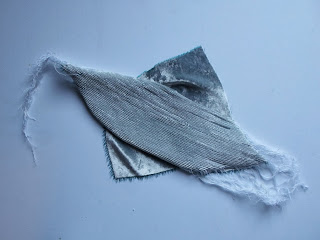Origins has been a very interesting unit for me. I feel that I have vastly broadened my capabilities and my understanding of what drawing can be. At the start of the unit, I feel like I was very small-minded and not open to experimenting outside my comfort zones. However, with the tasks we’ve been set throughout I think I have become much more versatile and flexible, which I never saw myself doing.
At first, I found it difficult to incorporate my chance card drawings into my other work because my drawings were so limited. However as the unit went on and I learned to look into what drawing actually is, my drawing became more usable in Embroidery. I have begun to look at objects in various ways rather than just looking at it as a whole. This has really helped me to develop my work and come up with new and stimulating ideas.
I have found that taking one image or idea and working on it a few times gives a better outcome than making several different ideas one by one. By taking these images from my drawings, they have been turned from an object, into a sketch, into stitching on a piece of fabric. Although this final sample may not look like the original object, it has been innovated into something possibly better.
Managing time was a problem for me in the beginning. I found myself rushing to meet the weekly deadlines, which took an effect on the quality of my work. However through the unit I have developed a routine and although I don’t plan my week minute by minute, I am getting things done more comfortably. I am able to work this around a social life without getting stressed out and losing my head. This for me is quite an achievement as I normally leave everything until the last minute. Even though I still have a to-do list a few days before the deadline, I feel my more effective time management has cut this list short.
The Origins unit has made me try new things and change my opinion on what I do and don’t like. Previously I preferred to work on smaller pieces of paper and do detailed drawings. Yet because the drawing Fridays have had me working on no smaller than A3 paper, I now quite enjoy working on a bigger surface and I feel in future I will choose this myself without having to be told.
Overall, this unit has given me the skills to challenge my own preconceptions of an object, and experiment with different techniques that I may have never even considered before. Although I feel I have definitely grown a lot as a textile artist, there are still many things I have yet to try, but from now on I will take this head on rather than being closed-minded.



























